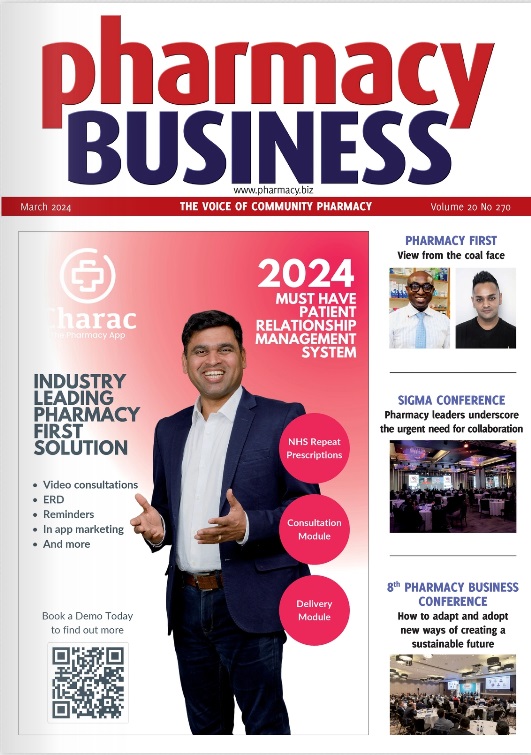Pharmacy law expert David Reissner discusses the key risks, assumptions and sensitivities of the hub and spoke dispensing model…
Under the Medicines Act 1968, dispensing is classified as “assembly”. It is not lawful to assemble medicines without a manufacturer’s licence, but there is an exemption when medicines are assembled in a pharmacy under a pharmacist’s supervision with a view to selling or supplying the medicines either at that pharmacy or at any other pharmacy forming part of the same retail pharmacy business.
The words “forming part of the same retail pharmacy business” allow a medicine dispensed at one pharmacy to be supplied at a different pharmacy that has the same owner.
Consultation
The Department of Health and Social Care has launched a consultation on proposals to allow all pharmacies (spokes) and dispensing doctors to outsource dispensing to another pharmacy (hub).
The consultation is accompanied by draft Regulations that would amend parts of the Medicines Act 1968 and parts of the Human Medicines Regulations 2012.
New regulations
The new Regulations allow for two types of hub and spoke model, and spoke pharmacies would be able to outsource dispensing to as many hubs as they like. Under both models, there would have to be an “arrangement” between the hub and the spoke.
The Regulations say this does not have to be a binding legal agreement. An “arrangement” could be very loose and say nothing more than that the hub will provide a service for the spoke at a particular price.
Despite the absence of any minimum requirements for an “arrangement”, hubs, spokes and patients would all benefit from a written contract between the hub and spoke that spells out:
- whether the hub or the spoke will carry out a clinical check.
- whether the hub or the spoke will carry out an accuracy check.
- whether hubs agree not to promote their services to the spoke’s patients with a view to poaching them. However, such contractual conditions will have to respect patients’ right to freedom of choice.
The two models
In the first type of hub and spoke model, the hub would supply a dispensed medicine to the spoke, and the spoke would supply to the patient. Under the current law, the supply by a hub to a spoke would be a wholesale transaction if the hub and spoke do not have the same owner.
This would require the hub to get a Wholesale Dealer’s Licence from the MHRA. The Regulations propose to avoid this by designating the supply from a hub to a spoke as a retail transaction.
The second hub and spoke model would enable a hub to deliver dispensed medicines direct to patients. The supply from a hub direct to a patient is deemed to be a supply by the spoke to the patient.
Currently, the NHS regulations say that pharmacies will only be paid for providing services from premises that are included in a pharmaceutical list held by NHS England or the equivalent lists in Scotland, Wales or Northern Ireland.
Being listed is commonly referred to as having an NHS contract. Market entry regulations restrict the relocation of pharmacies and the grant of new contracts unless narrow criteria can be met.
If hubs are allowed to deliver dispensed medicines direct to patients, this could seriously undermine the market entry restrictions.
The DHSC is aware that there could be unintended consequences if hubs can deliver direct to patients but has decided to leave the Pharmaceutical Services Negotiating Committee to discuss with NHS England whether changes should be made to the NHS regulations to protect the market entry arrangements.
Supervision
If a hub supplies direct to a patient, the supply is deemed to be a supply to the patient by the spoke at the time the spoke received the prescription. Since all pharmacies must have a responsible pharmacist and the hub might make the supply when the responsible pharmacist is out, a supply by the hub to a patient will be treated as having been made at the time the spoke received the prescription.
It is not clear how this gets round the requirement for the spoke to supervise supplies that are not made personally by a pharmacist.
A further consultation on changing the law of supervision is expected, but this has been delayed, so the hub and spoke changes may make pharmacist supervision even more uncertain than it already is.
Transparency
The DHSC considers that there should be transparency when spokes use hubs. The responsible pharmacist notice that pharmacies are required to display will also have to give the names and addresses of all hub pharmacies used.
In addition, dispensing labels will have to give either the name and address of the spoke or the name and address of the hub.
Since the main purpose of providing such information is to let the patient know who is responsible for their medication and who to contact for advice, it would probably be better to require the name and address of the spoke on the dispensing label, even if information is added that the medication has been dispensed by a named hub on behalf of the spoke.
Collection kiosks
Currently, the Human Medicines Regulations allow Prescription Only Medicines and Pharmacy medicines to be supplied on pharmacy premises. However, many pharmacies have been installing collection kiosks from which patients can collect dispensed medicines.
These kiosks are often not located on pharmacy premises and there is a lack of clarity over the legal position. DHSC is keen to encourage pharmacies to increase the use of automation, so the law will be changed to say that Prescription Only Medicines and Pharmacy medicines must be supplied “at or from” pharmacy premises.
Liability for errors
If an error is made and a patient is harmed, liability will depend on where any negligence has occurred. Both the hub and the spoke may be liable if there has been a mistake at the hub which ought to have been spotted at the spoke.
However, each case will depend on its own facts and will take into account any allocation of responsibilities in arrangements agreed between the hub and the spoke.
David Reissner is chair of the Pharmacy Law & Ethics Association.









